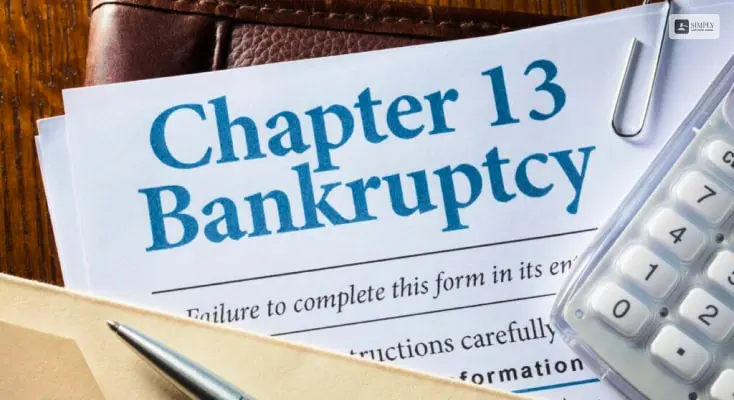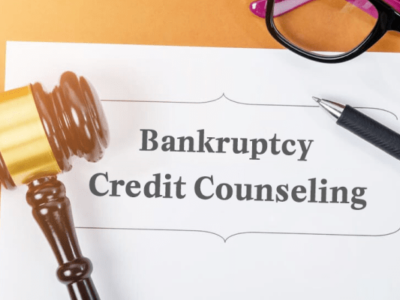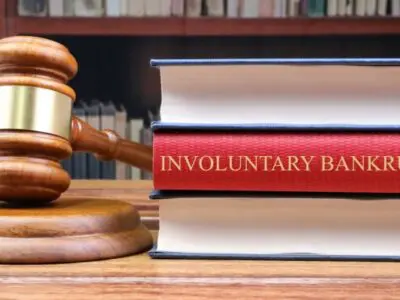
You must have heard of the term bankruptcy, but do you know there are various kinds of bankruptcies that are associated with the term? In the United States, there are various chapters assigned to each kind of bankruptcy that exists.
In this article, we will be discussing Chapter 13 bankruptcy and ways one can file for it in the United States.
What Is Chapter 13 Bankruptcy?

When life hits you with a financial curveball, it’s essential to have options to regain control of your financial future. One such option is Chapter 13 bankruptcy. Let’s dive into this topic to learn more about it.
Chapter 13 Bankruptcy: A Lifeline for Financial Rebuilding
Picture this: You’re swimming in a sea of debt, struggling to keep your head above water. It feels like you’re drowning in bills, and you’re not sure how to escape the financial undertow. That’s where Chapter 13 bankruptcy steps in – like a lifeguard rescuing you from this turbulent financial sea.
What Is Chapter 13 Bankruptcy Exactly?
Chapter 13 bankruptcy is often referred to as the “wage earner’s” or “reorganization” bankruptcy. It’s a legal process that allows individuals with regular income to create a structured plan to repay their debts over time, usually three to five years. Unlike Chapter 7 bankruptcy, which involves the liquidation of assets to pay off debts, Chapter 13 focuses on debt restructuring.
The Power of the Repayment Plan
Imagine having a game plan to tackle your debts systematically. With Chapter 13, you work with a bankruptcy attorney to develop a repayment plan that fits your budget. This plan considers your income, living expenses, and the amount you owe to creditors. It’s like designing a roadmap to financial freedom.
Benefits of Chapter 13 Bankruptcy

Here are some of the benefits associated with filing a Chapter 13 bankruptcy:
Stopping Foreclosure:
If your home is at risk of foreclosure, Chapter 13 can halt the process and give you a chance to catch up on missed mortgage payments over the plan’s duration.
Protecting Assets:
Unlike Chapter 7, which may involve selling assets, Chapter 13 allows you to keep your property while restructuring your debt.
Managing Unsecured Debts:
Credit card debt and medical bills can become overwhelming. Chapter 13 helps you consolidate and manage these unsecured debts into a single monthly payment.
Ending Creditor Harassment:
Filing for Chapter 13 puts an end to those incessant creditor calls and letters. They must work through the court-approved repayment plan.
Credit Score Recovery:
While Chapter 13 stays on your credit report for seven years, it’s often viewed more favorably by creditors than Chapter 7. With responsible financial management during the repayment period, you can start rebuilding your credit score.
Is Chapter 13 Right for You?
Chapter 13 bankruptcy isn’t a one-size-fits-all solution, and it’s essential to consult with a bankruptcy attorney to determine if it’s the right path for your unique financial situation. It’s a tool that empowers you to regain control of your finances, protect your assets, and pave the way to a brighter financial future.
In conclusion, think of Chapter 13 bankruptcy as a lifeline, not a last resort. It’s a powerful tool that can help you regain control of your financial destiny, providing a structured path to clear your debts and achieve a fresh start. Remember, when life throws you a curveball, Chapter 13 bankruptcy might just be the game-changer you need on your financial journey.
How To File For Chapter 13 Bankruptcy?

Facing financial turmoil can be overwhelming, but remember, there’s a way out of the storm. Chapter 13 bankruptcy can be your ticket to a fresh financial start. Let’s break down the steps for filing for Chapter 13 bankruptcy:
1. Consultation with a Bankruptcy Attorney: Your First Step
Before you dive headfirst into the process, it’s crucial to consult with a bankruptcy attorney. They’re your guides through the bankruptcy maze, helping you understand your options and decide if Chapter 13 is the right choice for your unique circumstances.
2. Gather Financial Information: Know Your Numbers
Once you’re on board with Chapter 13, it’s time to take a closer look at your financial landscape. Gather all your financial documents: income statements, tax returns, a list of assets and liabilities, monthly living expenses, and a detailed list of creditors and debts. Having this information at your fingertips will make the process smoother.
3. Attend Credit Counseling: A Mandatory Step
Before filing, you’ll need to complete a credit counseling course from an approved agency. This step aims to complete a credit counseling course from an approved agency. This step aims to ensure you’ve explored all possible alternatives to bankruptcy. Your attorney can recommend reputable agencies and guide you through this requirement.
4. Prepare and File the Bankruptcy Petition: Your Official Start
With your attorney’s help, you’ll prepare your Chapter 13 bankruptcy petition, schedules, and a proposed repayment plan. Once completed, your attorney will file these documents with the bankruptcy court in your jurisdiction, officially starting your bankruptcy case.
5. Automatic Stay: Immediate Relief
Filing for Chapter 13 initiates an automatic stay. This legal shield prevents creditors from pursuing collections actions, including calls, letters, or foreclosure proceedings. It offers immediate and breathing space to reorganize your finances.
6. The Meeting of Creditors: A Pivotal Moment
Within a month of filing, you’ll attend a “341 meeting of creditors.” Don’t let the formal name intimidate you; it’s usually straightforward. You and your attorney and a bankruptcy trustee will discuss your financial situation, assets, and proposed repayment plan. Creditors may attend, although they typically don’t ask many questions.
7. Confirmation Hearing: Getting the Green Light
Your proposed repayment plan will be subject to approval at a confirmation hearing. Creditors have the opportunity to object, but if your plan adheres to bankruptcy law and your income can support it, the court will likely confirm it. This is a major milestone in your bankruptcy journey.
8. Monthly Payments: Commit to Your Plan
Once your plan is confirmed, you’ll begin making monthly payments to the Chapter 13 trustee. The trustee will distribute these payments to your creditors according to the plan. It’s crucial to stick to these payments to ensure your bankruptcy’s success.
9. Financial Education: Completing the Requirements
Throughout your Chapter 13 plan, you’ll be required to attend a financial management course. This education equips you with the tools needed to manage your finances more effectively in the future.
10. Plan Completion: The Finish Line
After successfully making all required payments over three to five years, you’ll receive a discharge, wiping out any remaining eligible debts. It’s a moment of triumph, signaling your fresh financial start.
In conclusion, Chapter 13 bankruptcy is a structured path to reclaiming your financial future. With the right guidance from an experienced attorney, a clear plan, and commitment, you can navigate this process and emerge on the other side with a brighter financial outlook. Remember, bankruptcy isn’t the end; it’s a new beginning on your financial journey.
Final Thoughts
Now, you have a fair idea regarding what makes Chapter 13 bankruptcy to be unique from other kinds of bankruptcy listed within the United States. It is one of the most common kinds of bankruptcy that allows businesses or individuals to reorganize their finances to have a fresh start.
It is advised that you take guidance from an experienced bankruptcy lawyer to effectively file for a Chapter 13 bankruptcy. I hope you have found the appropriate information and guidelines that you’ve been searching for in this article.
Read Also:


